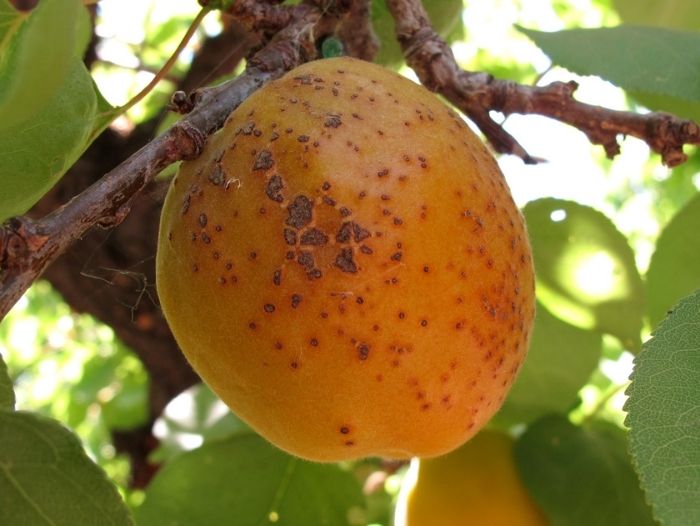
Rust
WHAT IT IS AND HOW TO ELIMINATE
Albaricoque
Rust
Tranzschelia Pruni-Spinosae
Pathogen:
Fungus
Type:
Risk to the plant:
INTERMEDIATE
Royas

WHO CAUSES IT?
Tranzschelia pruni-spinosae is a pathogenic fungus that causes the disease known as rust in various plants, including apricots. This fungus is characterized by its ability to produce spores at different stages of its life cycle, which allows it to spread easily through air and water. The fungus can survive the winter on plant debris or alternative host plants, facilitating its reappearance in the following season. Tranzschelia pruni-spinosae thrives in conditions of high humidity and moderate to high temperatures.
SYMPTOMS
The rust caused by this fungus on apricot manifests itself as yellow-orange Taches on the leaves, which then turn brown and dry. Brown or dark scabs with a rough appearance appear on the fruit. This disease can weaken the plant and significantly reduce the quality and quantity of the harvest. As the disease progresses, leaves may drop prematurely.
• Appearance of yellow or orange Taches on the leaves.
• Appearance of brown scabs on the fruits.
• The Taches turn brown as the disease progresses.
• Premature fall of leaves.
• Loss of plant vigor.
• Reduction in the quality and quantity of the harvest.



DEVELOPMENT CONDITIONS
Temperature:
15ºC - 25ºC
Humidity:
80% - 90%
HOW IS IT SPREAD?
Wind, water, contact with infected plant remains.
HOW TO ELIMINATE IT?
Home treatments
Natural allies
Chemical treatments
RECOMMENDED PRODUCTS TO ELIMINATE THE PEST
REPELLENT PLANTS
-
RECOMMENDATIONS
- Remove and discard infected leaves as soon as you detect them.
- Improves ventilation between plants, preventing them from being too close together.
- Avoid wetting the leaves when watering, especially in the afternoon or evening.
- Clean remains of old plants and nearby weeds.
- If necessary, apply a specific fungicide for rusts, following the product instructions.
- Rotate crops or change the location of plants each season if possible.
















